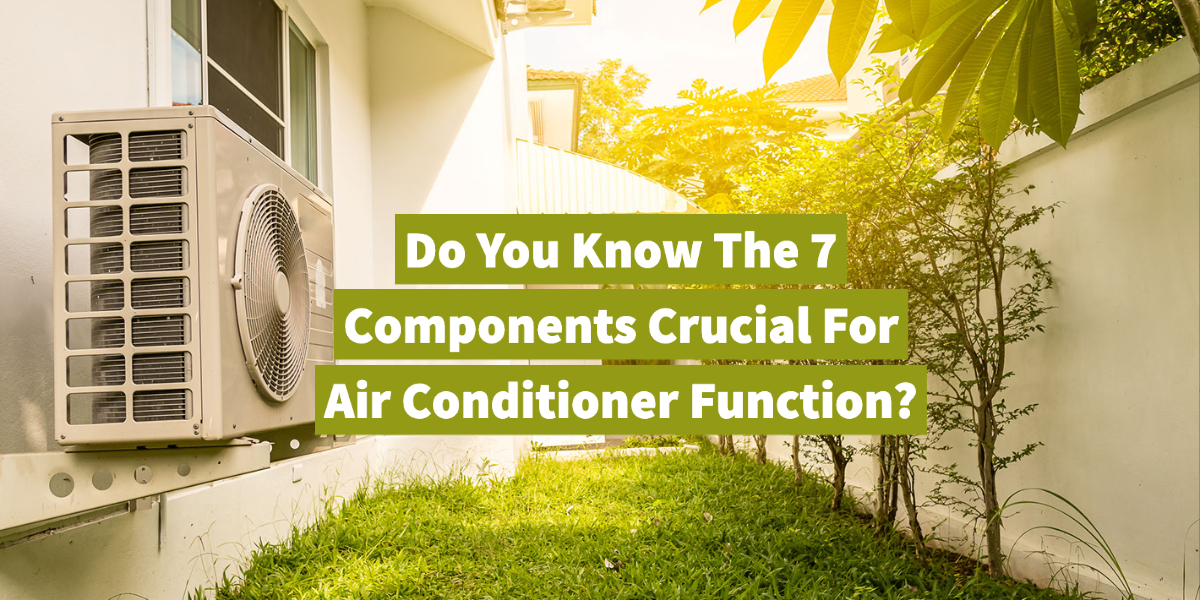Your air conditioner is made up of a number of components that work together to achieve the ultimate objective of keeping your house cool and pleasant. Have you ever wondered what makes up your air conditioner? If all components are in good operating order, most home air conditioners may be almost unnoticeable. However, knowing about these components can aid in understanding how your air conditioner works and help you maintain it in excellent working order for years to come. Our HVAC experts at Delaware Heating & Air go through everything in this article!
Evaporator Coil
The evaporator coils in your air conditioner are responsible for absorbing all of the heat from your home. The refrigerant in the evaporator coil is captured by copper tubes that are then depressurized by the expansion valve. The heat is transferred to the air as it passes over the cold evaporator coils, which causes your home’s temperature to drop. As a result, when warm air moves over the evaporator coils’ surfaces, they absorb heat instead of releasing it inside your home. An indoor air handler blows air over them to transfer heat outdoors and cool air into your home.
Compressor
When refrigerant is compressed, its temperature rises as a result of the compressor in the air conditioner. According to the combined gas law, which includes Gay-Lusaac’s Law, Charles’ Law, and Boyle’s Law, when the refrigerant is compressed, it heats up. The compressor is utilized to raise the pressure so that refrigerants may reach a higher temperature than outdoors to remove the heat from the home.
Condenser Coil
Condenser coils, unlike evaporator coils, are frequently placed in the outdoor unit. The refrigerant is carried through the condenser coils and absorbed by the evaporator. Condenser coils are used to transport heat from inside a building to the outside environment. The condenser fan blows air over the coils, allowing heat to be transferred from the refrigerant to the environment as it is cooled. When the gas temperature drops, it undergoes phase changes from a gas to a liquid state via the expansion valve.
Expansion Valve
The refrigerant is still far too hot to enter the condenser even after it has cooled; however, it can enter the expansion valve, which lies between the evaporator and condenser. The expansion valve regulates the pressure in the refrigerant. As a result, pressure is reduced in the expansion valve; then, the refrigerant undergoes a change of state from liquid to gas. Now the refrigerant is cool enough to enter back into the evaporator coil.
Air Filter
Air filters clean the air in your home of pollutants like dust, dirt, germs, and other things. There are a number of different air filters to select from that can assist you in meeting your indoor air quality goals. Replace your air filters every 1 to 3 months if you want your HVAC system to operate effectively and the air in your house to be kept clean.
Refrigerant
You might wonder what refrigerant is because it’s been discussed several times. Refrigerant is an important component of air conditioning systems since it moves heat from the interior of your house to the outside environment while cooling your home. In addition, the capacity to convert from a liquid to a gas at precisely specified temperatures makes refrigerant ideal for maintaining a cool home.
The refrigerant passes through your air conditioner’s pipes and copper coils, linking the indoor and outdoor units. The inside device absorbs heat, causing the refrigerant to change from a gas to a liquid. The refrigerant is then carried out of the building to remove heat. When the heat is removed, the refrigerant will revert to its original state. This cycle continues as long as your air conditioner is on in order to keep your home cool and comfortable.
Thermostat
Thermostats are the command center for your air conditioner since they regulate the ideal comfort and temperature levels in your house. Your thermostat sends a signal to turn on your air conditioner when the temperature in your home isn’t where you want it. The sensitivity of your thermostat to temperature and humidity varies depending on your preferences. To avoid disrupting your air conditioner’s home comfort settings, place your thermostat somewhere out of the way, distant from sunlight.
It’s easier than ever to understand your residential air conditoner! But, if you still have problems comprehending your home cooling equipment and want expert help, contact our HVAC experts at Delaware Heating & Air right now! Call us at (740) 227-8302 today, or fill out an online appointment form by clicking here!










